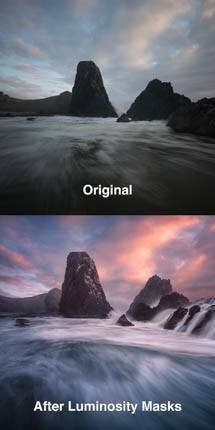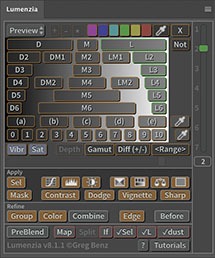I spent a couple of weeks photographing Oregon this summer. I hadn’t really picked the time of the trip, as I was trying to coordinate around a family trip. I wouldn’t call it a mistake, but I hadn’t given enough thought to the weather. It turns out Oregon summers are pretty sunny. Really sunny. Like 10 days in a row without a cloud in sight sunny. Not one cloud.
That’s great for vacation, but it really isn’t ideal for landscape photography. An ideal sunrise or sunset has a mix of sun and clouds. Without both, color in the sky tends to be fairly minimal. Forest fires in the area threw enough particles in the air that there was some color in the cloudless sky, but I still needed to be creative.
There are many ways to deal with a clear sky. One is to minimize it, as I did here by shooting in the forest. It wasn’t a shot I’d planned in advance, but by working with the weather instead of against it, I was able to get a really nice shot when the sky wasn’t fully cooperating.
There are many ways to work with open skies. Another is to shoot the night skies. If the moon is minimal, it’s great opportunity to shoot the Milky Way. If there’s a larger moon, it can make a great backlight or side light.
Another option is to make the sun a strong focal point in the image. The best way to do that in clear skies is to shoot with the sun right at the edge of an object, so that you get a sun star (and not a blown out sun). Try shooting a frame with a small aperture like f/11 or f/16 if you want to really bring out the sunburst.
By shooting around your lighting and weather, and not getting too focused on a specific subject, you’ll get many more great shots with the time you have on your next trip.


